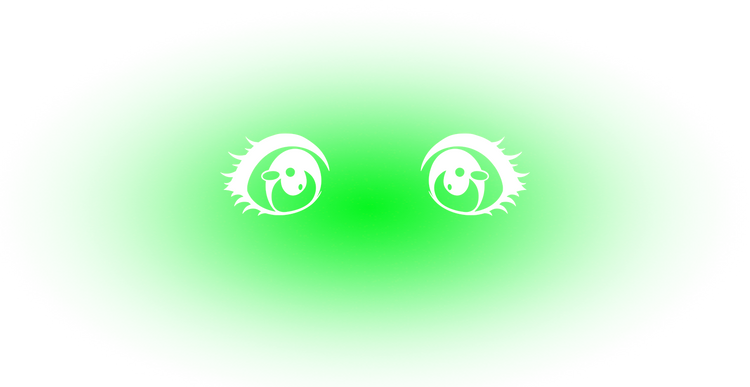
Now I Can Get Rid of the Actual Thing
by Keegan Swenson
 Stan Smiths by Bernie Kaminski
Stan Smiths by Bernie KaminskiBernie Kaminski makes art out of everyday objects. Bernie Kaminski likes early Letterman (1980’s) and Andy Warhol and Don DeLillo and tennis. Bernie loves New York City. We sat down at a table outside of Little Canal in the July heat and chatted about things.
Bernie Kaminski: Magazines were the source of information for everything about the city. Before I moved here, they were everything.
Keegan Swenson: What sort of magazines?
BK: Dynamite Magazine, it came on the Bookmobile. I think it started in the early 70s. The graphics were incredible. I still have the issues from when I was a kid. And later, MAD and the New Yorker.
KS: Did the humor of Mad Magazine appeal to you?
BS: A lot of it, yes. My mom’s brother had a bunch of issues from the 50s and 60s. I didn’t understand a lot of the references. But I liked Al Jaffee, Don Martin and all the artwork. It had no ads in it back then. It was just a beautiful magazine.
KS: Did you always have an interest in the retro?
BK: I was interested in the early seventies and sixties and how things looked.
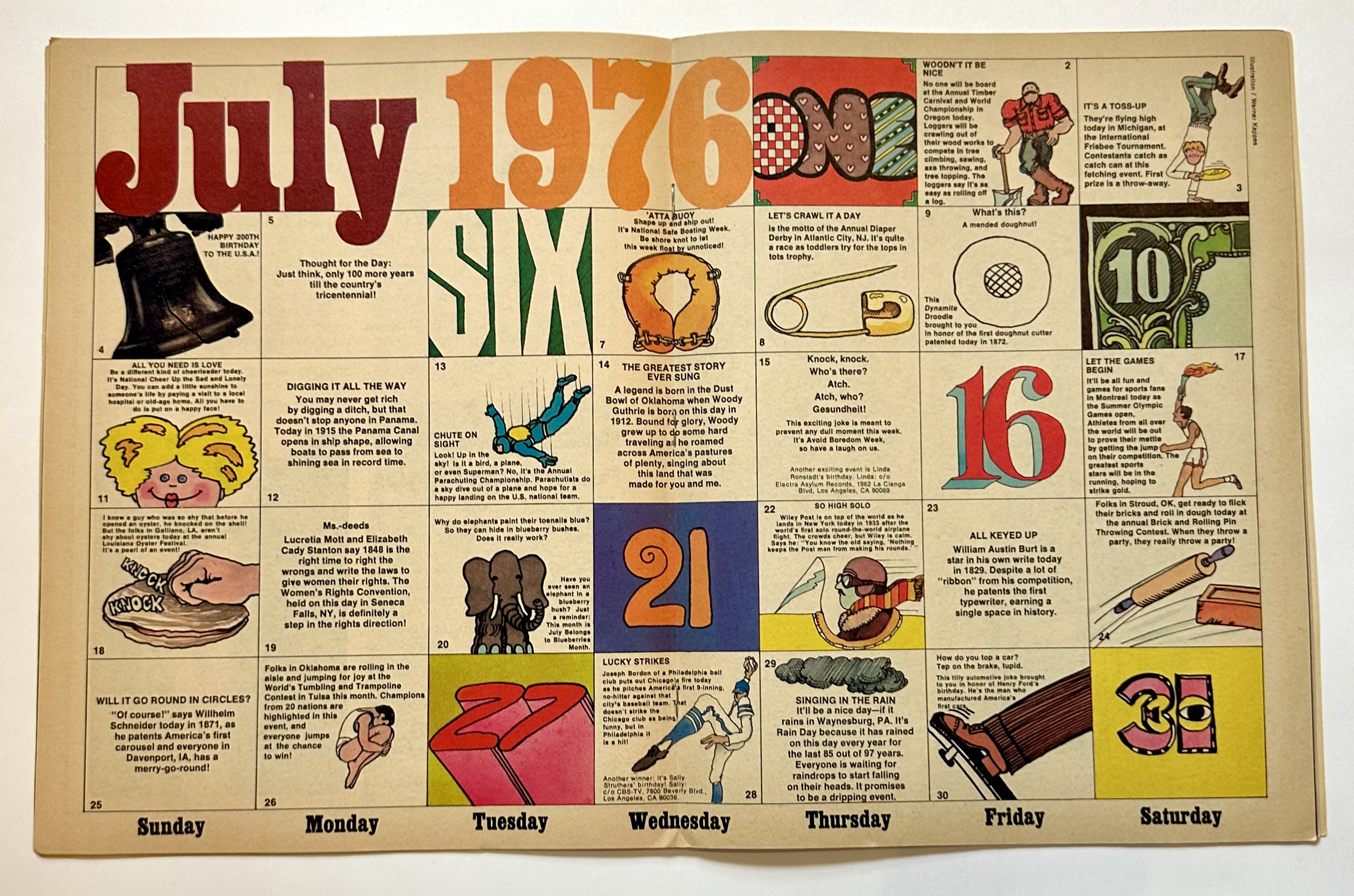
Dynamite Magazine Calendar from Bernie Kaminski’s personal archive.
KS: Can you give me just the very base definition of papier-mâché?
BS: Covering an object with newspaper coated in a combination of flour, glue and water.
KS: What are the first couple objects you made?
BK: My daughter brought a seahorse home from school and we created art that weekend. I made the simplest thing, a basketball I think. We blew up balloons, covered them.
KS: The 1968-69 Manhattan phone book dude. So good. What’s the fascination with phone books?
BK: In high school, I went to the public library and tried to look people up in the Manhattan phone book. Then a couple years ago, I bought one for an art project. I started looking up people and I was just blown away by who was listed. Lou Reed, Gene Hackman, Fran Lebowitz, Barbara Streisand, Robert De Niro, Robert Frank. Edward Hopper, Jasper Johns, Don DeLillo, Warhol of course. They were right there. It’s been fun to look through a book and think about who was living here that year.
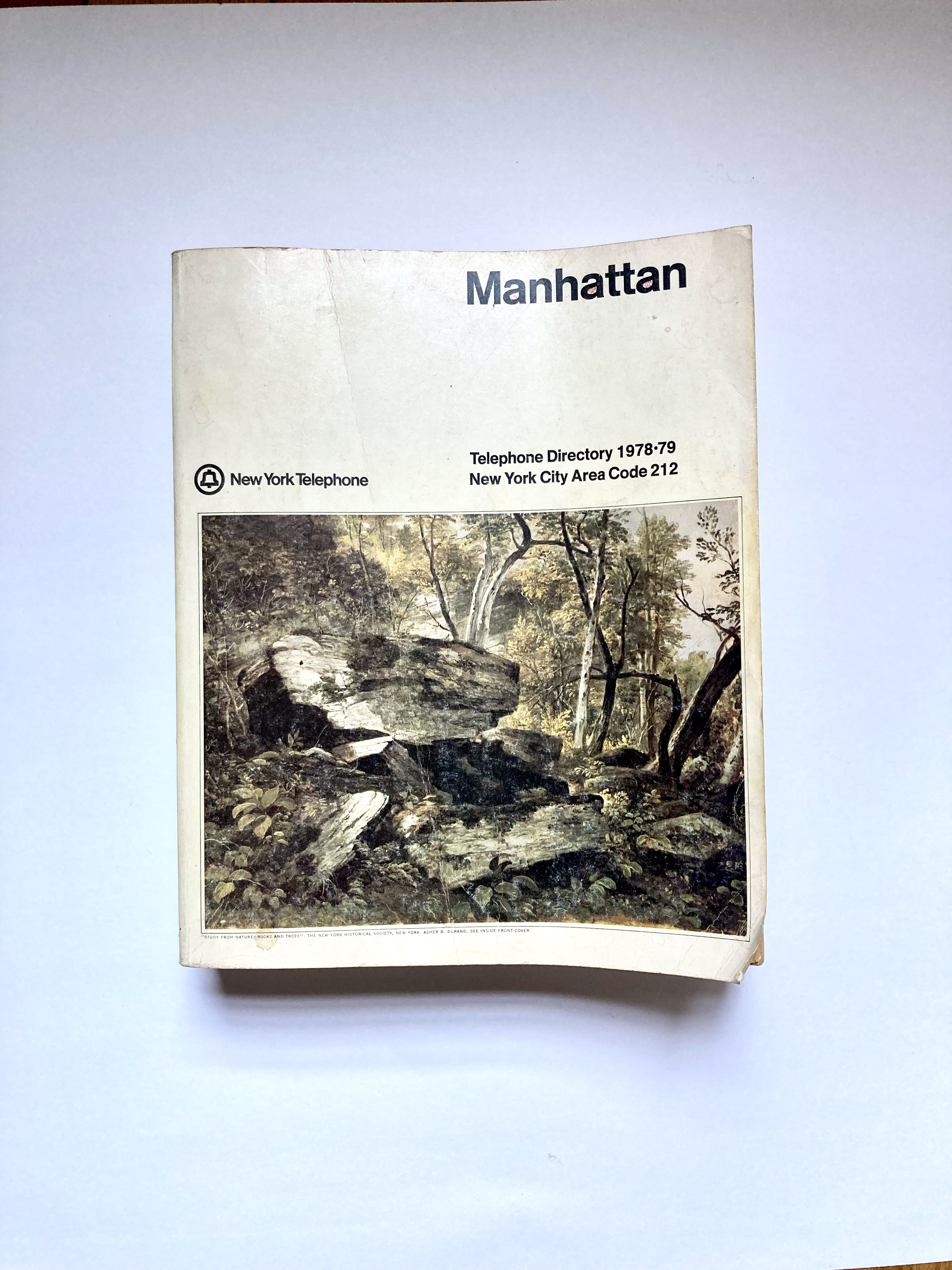
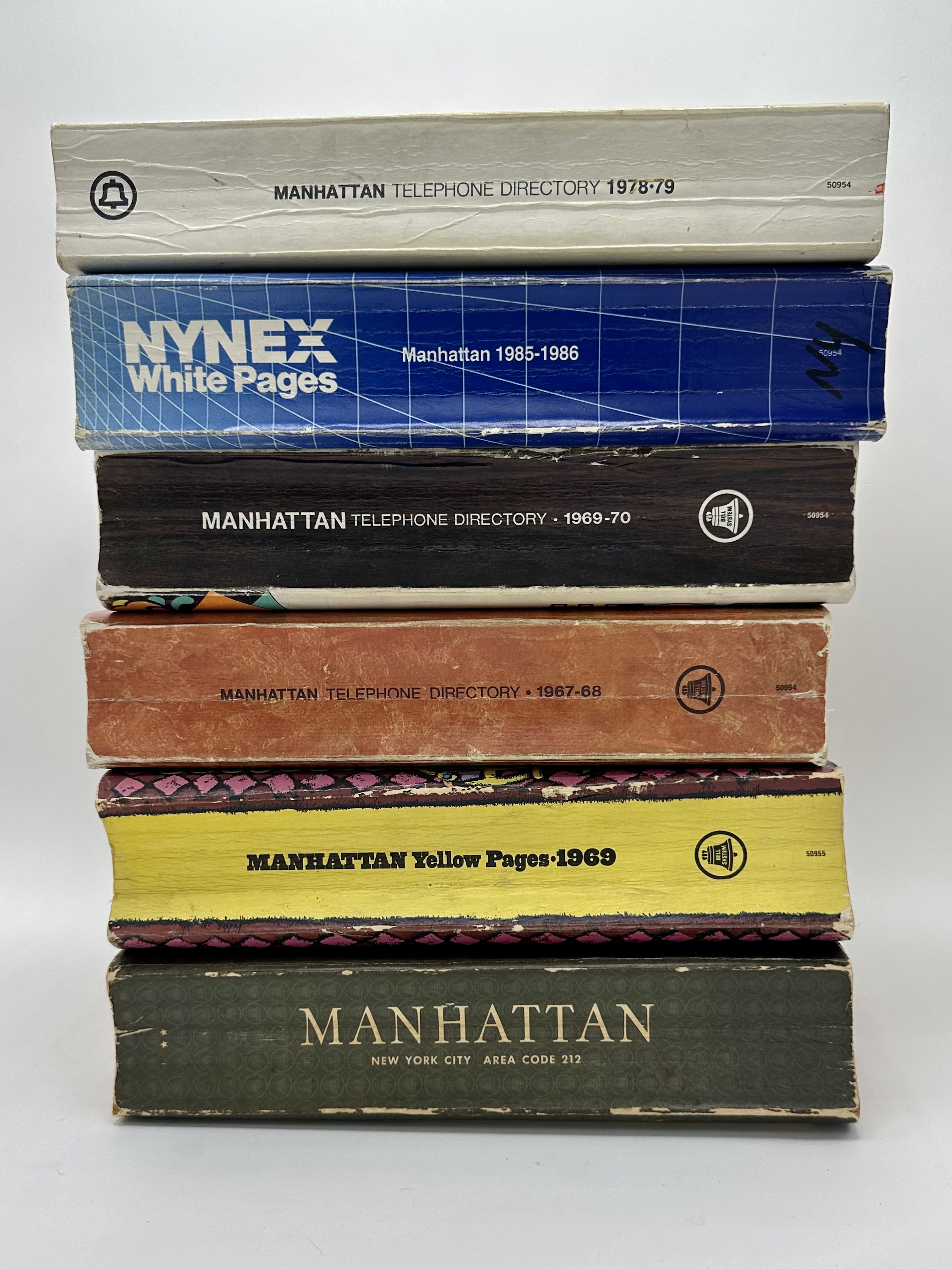
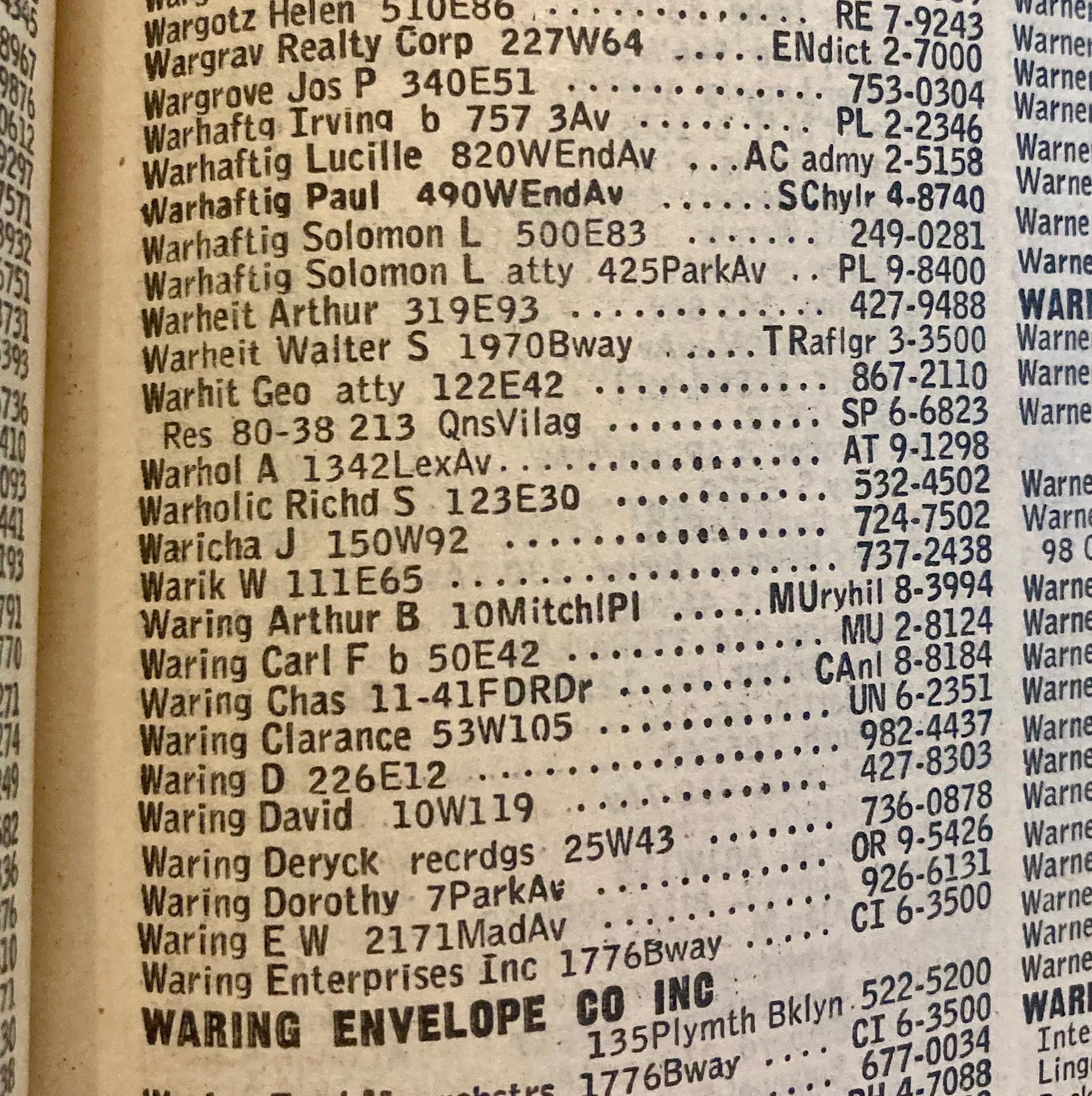
KS: What did Warhol say? “Once you see things pop, you can never see America the same way.” Is he a big influence? Am I annoying for asking that question?
BK: One of the things that I was particularly interested in is his time capsule boxes. A museum should do a show where they put all of it on display. The conscious act of hanging onto stuff that you take for granted. Old receipts and movie ticket stubs. I’m always thinking about the different ways we hang on to stuff.
KS: Are you a hoarder?
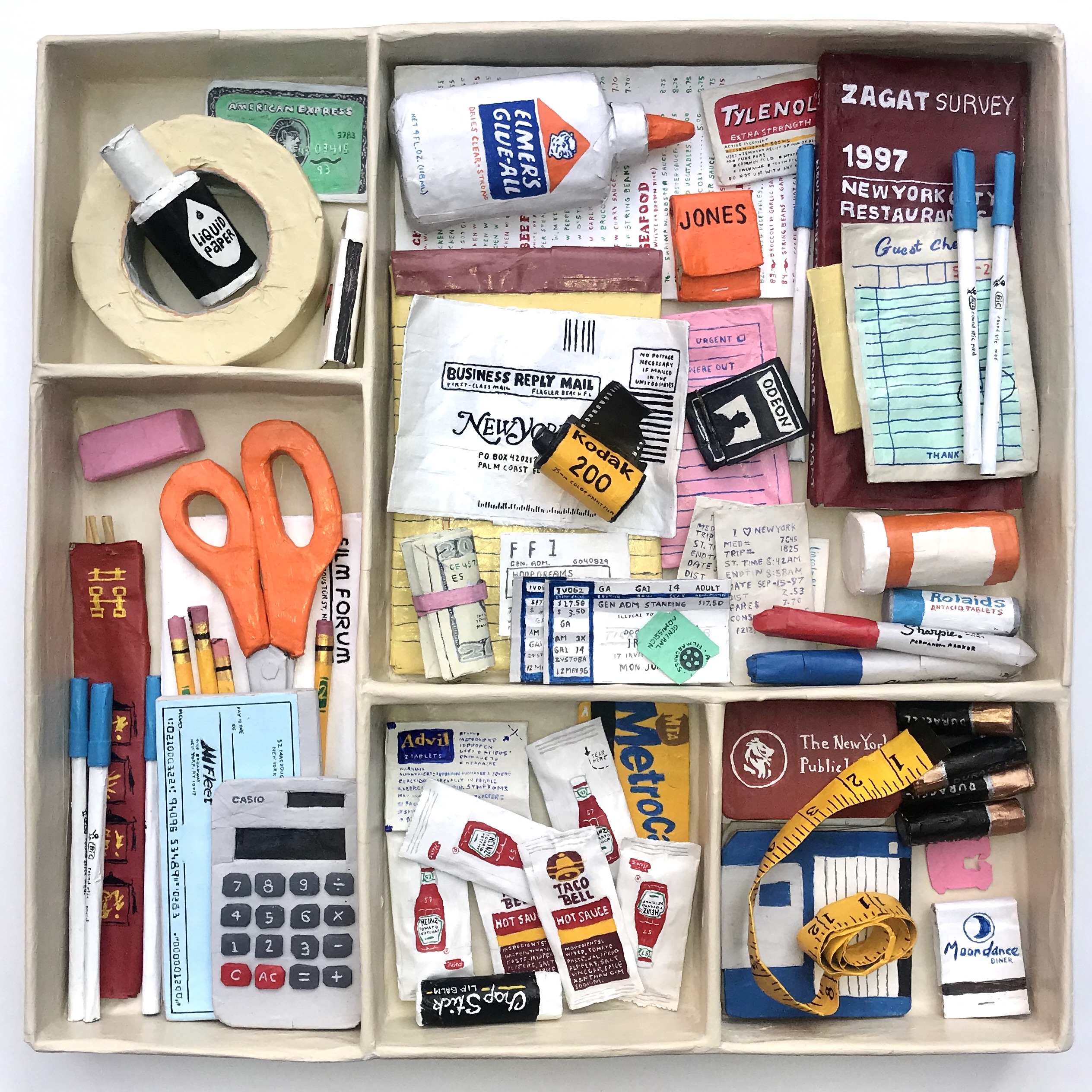 Junk Drawer by Bernie Kaminski
Junk Drawer by Bernie KaminskiBK: I wouldn't say that I'm a hoarder. I have a lot of books and records. But I don't have a ton of objects. I think I've been somewhat selective in the stuff that I've hung on to. I have kept all my receipts from the mid 90s for tax purposes. Some of those really inspired me. Receipts from restaurants and taxi trips from twenty years ago.
KS: Have you watched How To With John Wilson? He kept a journal with memory hooks and shows them in this one episode. A bit obsessive, this documentation. The meals we eat, the conversations we have, the sameness of everyday existence.
BK: Yeah. Totally. The photographer Steven Shore kept a road trip journal around 50 years ago and he's been posting entries on Instagram. He documented where he ate each day. It's always like a Holiday Inn or Howard Johnson's. And then what he watched that night. It’s 1973, so it's like CBS Evening News, 60 Minutes on Sunday. The Mary Tyler Moore Show, Carol Burnett. And then these photos are iconic. I really got a huge kick out of seeing those diary entries. I've kept a date book for a really long time and it's not any like personal information, but it's been mostly just appointments and the movies that I've seen.
KS: What’s your relationship with Instagram as a platform?
BK: When I started making the stuff, it was just something fun to do. I understand that the size of the objects translate well for Instagram. But I’m not making things with Instagram in mind. It’s a pleasurable activity and I look forward to the time I’m able to give into the process. It keeps me off my phone for hours a time. I enjoy thinking about what to make and figuring out how to execute it. Most of the stuff that I make is somehow related to how I fantasize about living in New York pre-internet.
KS: When did this fascination with New York begin?
BK: I was really interested in New York when I was younger. From the Odd Couple to Saturday Night Live and Letterman.. And I knew that MTV was in New York, you know, it was such a big deal in the eighties.
KS: There's a lot of Letterman posts on your account.
BK: Yeah. Oh, definitely. Especially in the early eighties. I think that people now don't really understand how different TV was at the time and what a big deal that show was. How it was a New York show and contained more local personalities. I still get a charge if I watch the original show open. The city looks kind of dirty and the streets are empty. Later they produced an open that made the city look glamorous and I didn’t care for it as much.
KS: How long have you lived in the neighborhood [Dimes Square]?
BK: Since 2004. I loved walking around back then. I loved how quiet it was. Orchard and Ludlow seemed deserted at night. Dimes was a Malaysian restaurant and the hotel was a hot pot place. When new businesses started opening they seemed kind of organic to the neighborhood at first. I would see the owners of Clandestino, Dimes, or Coming Soon walking around. When it became a destination for people to hang out it seemed weird but I still love it. There are some good glimpses of the neighborhood from the mid 00s on Flight of the Conchords. The electronics store on the show was a real place and it’s part of Ernesto’s now.
KS: What was the last gallery show you had?
BK: It was at Turn Gallery last fall. I loved it. It was the only show I had.


KS: Does this William Carlos Williams quote resonate with you? Say it, no ideas but in things—nothing but the blank faces of the houses and cylindrical trees bent.
BK: A lot of the stuff that I've made, for whatever reason, I've had some attachment to or felt some connection with. So yes, that quote resonates. I have a connection with things.
KS: Do you feel different about an object after making a different representation of it?
BK: I feel now I can get rid of the actual thing.
KS: Do you think this nostalgia for duration or time that you express in your work is related at all to social media? Or is that a boring cliche? A scapegoat.
BK: I think every generation has nostalgia for when they were young and they have their life ahead of them. I do end up thinking about living here in the pre-internet days a lot. I imagine things like getting off work on Friday and getting into my apartment, closing the door, no one could contact me. All I had were books and records and cable television to occupy me.

Bernie Kaminski is an artist and television producer living in New York City. His debut solo show opened at Turn Gallery in 2022.
Keegan Swenson is a writer living in New York City. He is the reviews editor at Maudlin House and the interview editor at Forever Magazine. His fiction has appeared in Heavy Feather Review, Expat Press, and the Denver Quarterly.

